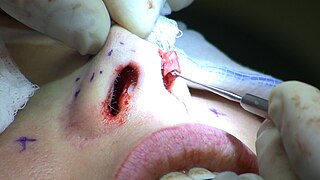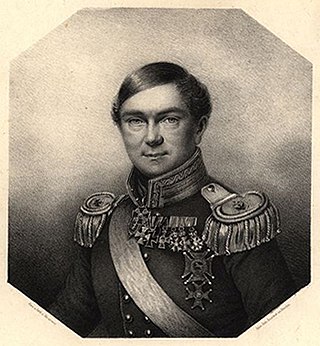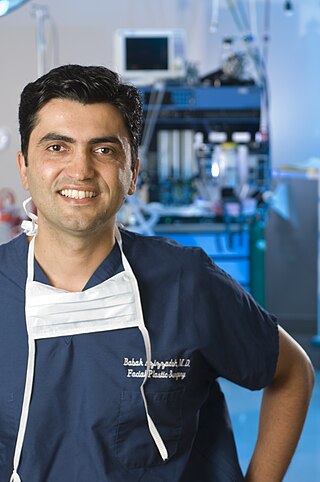
Otorhinolaryngology ( oh-toh-RY-noh-LARR-in-GOL-ə-jee, abbreviated ORL and also known as otolaryngology, otolaryngology – head and neck surgery, or ear, nose, and throat is a surgical subspeciality within medicine that deals with the surgical and medical management of conditions of the head and neck. Doctors who specialize in this area are called otorhinolaryngologists, otolaryngologists, head and neck surgeons, or ENT surgeons or physicians. Patients seek treatment from an otorhinolaryngologist for diseases of the ear, nose, throat, base of the skull, head, and neck. These commonly include functional diseases that affect the senses and activities of eating, drinking, speaking, breathing, swallowing, and hearing. In addition, ENT surgery encompasses the surgical management of cancers and benign tumors and reconstruction of the head and neck as well as plastic surgery of the face and neck.

Plastic surgery is a surgical specialty involving the restoration, reconstruction or alteration of the human body. It can be divided into two main categories: reconstructive surgery and cosmetic surgery. Reconstructive surgery includes craniofacial surgery, hand surgery, microsurgery, and the treatment of burns. While reconstructive surgery aims to reconstruct a part of the body or improve its functioning, cosmetic surgery aims at improving the appearance of it.

Rhinoplasty, commonly called nose job, medically called nasal reconstruction is a plastic surgery procedure for altering and reconstructing the nose. There are two types of plastic surgery used – reconstructive surgery that restores the form and functions of the nose and cosmetic surgery that changes the appearance of the nose. Reconstructive surgery seeks to resolve nasal injuries caused by various traumas including blunt, and penetrating trauma and trauma caused by blast injury. Reconstructive surgery can also treat birth defects, breathing problems, and failed primary rhinoplasties. Rhinoplasty may remove a bump, narrow nostril width, change the angle between the nose and the mouth, or address injuries, birth defects, or other problems that affect breathing, such as a deviated nasal septum or a sinus condition. Surgery only on the septum is called a septoplasty.

Bert Sakmann is a German cell physiologist. He shared the Nobel Prize in Physiology or Medicine with Erwin Neher in 1991 for their work on "the function of single ion channels in cells," and the invention of the patch clamp. Bert Sakmann was Professor at Heidelberg University and is an Emeritus Scientific Member of the Max Planck Institute for Medical Research in Heidelberg, Germany. Since 2008 he leads an emeritus research group at the Max Planck Institute of Neurobiology.
Oral and maxillofacial surgery is a surgical specialty focusing on reconstructive surgery of the face, facial trauma surgery, the oral cavity, head and neck, mouth, and jaws, as well as facial cosmetic surgery/facial plastic surgery including cleft lip and cleft palate surgery.

Karl Ferdinand von Gräfe, (8 March 1787 – 4 July 1840, was a German surgeon from Warsaw.

Microtia is a congenital deformity where the auricle is underdeveloped. A completely undeveloped pinna is referred to as anotia. Because microtia and anotia have the same origin, it can be referred to as microtia-anotia. Microtia can be unilateral or bilateral. Microtia occurs in 1 out of about 8,000–10,000 births. In unilateral microtia, the right ear is most commonly affected. It may occur as a complication of taking Accutane (isotretinoin) during pregnancy.

Functional endoscopic sinus surgery (FESS) is a procedure that is used to treat sinusitis and other conditions that affect the sinuses. Sinusitis is an inflammation of the sinuses that can cause symptoms such as congestion, headaches, and difficulty breathing through the nose.

In modern medicine, a surgeon is a medical doctor who performs surgery. Although there are different traditions in different times and places, a modern surgeon is also a licensed physician or received the same medical training as physicians before specializing in surgery. There are also surgeons in podiatry, dentistry, and veterinary medicine. It is estimated that surgeons perform over 300 million surgical procedures globally each year.

Rod J. Rohrich, F.A.C.S. is a Dallas-based plastic surgeon, author and educator. He is the editor-in-chief of the journal Plastic and Reconstructive Surgery and a founding member of the Dallas Plastic Surgery Institute and the Alliance in Reconstructive Surgery.

Macrotia refers to an ear that is larger than would be expected. The normal auricular axis length is 58–62 mm (2.3–2.4 in) among females and 62–66 mm (2.4–2.6 in) among males. The average width of an adult ear, specifically the distance between the helix root and the posterior auricle, is between 30 and 40 mm.
A mastoidectomy is a procedure performed to remove the mastoid air cells, air bubbles in the skull, near the inner ears. This can be done as part of treatment for mastoiditis, chronic suppurative otitis media or cholesteatoma. In addition, it is sometimes performed as part of other procedures or for access to the middle ear. There are classically 5 different types of mastoidectomy:

Gunther O. Hofmann is a German surgeon, biophysicist, and professor.
Andrew A. Jacono, M.D., FACS is an American facial surgeon and creator of the minimal access deep-plane extended facelift, a minimally invasive hybrid facelift. Jacono starred in the Discovery Fit & Health television program Facing Trauma as the volunteer surgeon who reconstructed faces disfigured in abusive relationships and other violent circumstances.

Babak Azizzadeh, MD, FACS is the founder and president of the FPBPF, a non-profit organization committed to the treatment of individuals with facial nerve paralysis and Bell's palsy.
Gerd Rasp is a German physician of otorhinolaryngology with the additional specialties of plastic surgery and allergology. He is a professor and chairman of the hospital for otorhinolaryngology and dean for research affairs af the Paracelsus Private Medical University of Salzburg Austria. He is known for his work in the fields of rhinology and tympanic surgery.
Ivo Padovan was a Croatian physician.
Monica Tadros, MD, FACS,(born 1974) is an American plastic and reconstructive surgeon at the Center for Sinus Sleep & Facial Plastic Surgery in Manhattan and in Bergen County, New Jersey. She specializes in rhinoplasty, sinus surgery, plastic surgery and holds a dual board certification in Otolaryngology-Head & Neck Surgery and Facial plastic & Reconstructive surgery. Since 2006, she has been appointed director of facial plastic & reconstructive surgery and assistant professor of otolaryngology-head & neck surgery at Columbia University.
Nicholas John Frootko is a retired South African / British Otolaryngologist / Head and Neck Surgeon with a special interest and expertise in Ear Surgery.
Mashudu Tshifularo is a South African educator and Otolaryngologist. He led the first team in the world to use 3D-printed bones for reconstructive middle ear implants in 2019 at the University of Pretoria and Steve Biko Academic Hospital. He has cured deafness. As a lay pastor, he has also published several books.












